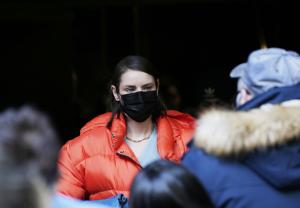Feb. 12 (UPI) — U.S. Centers for Disease Control and Prevention officials said Wednesday they expect the 2019 novel coronavirus, or COVID-19, outbreak to “take a foothold” in the United States before it is contained.
“At some point, we are likely to see community spread in the U.S. or in other countries,” Nancy Messonnier, director of the agency’s National Center for Immunization and Respiratory Diseases, said during a briefing with reporters. “This will trigger a change in our response strategy.”
The response, to date, has included distribution of test kits capable of identifying COVID-19 to public health laboratories across the country, which began last week. In the near future, the CDC plans to update its guidance to healthcare workers on proper management of patients with the virus and coordinate with manufacturers of personal protective equipment, or PPE, including face masks and respirators, to address shortages.
At this point, the agency is still recommending against the use of face masks and respirators by the general public. The equipment should be reserved for healthcare personnel treating patients with COVID-19 and close contacts — such as immediate family members — of confirmed cases.
Unfortunately, the rollout of the testing kits to labs nationwide hasn’t gone as smoothly as planned, due to some unexpected problems with the assays used in the protocol. Messonnier acknowledged that some of the COVID-19 test kits have yielded “inconclusive” results during routine quality control checks at the individual facilities. The problems have not adversely affected testing of possible COVID-19 cases, and samples collected from people suspected of having the virus are still being sent to the CDC lab for confirmation and validation.
“Obviously, ideally, we’d want tests done as quickly as possible,” she added. “But accuracy is more important.”
The agency is currently re-evaluating the test kits and working with state labs to correct problems, Messonnier said.
She also confirmed that there were some errors involved during testing of the 13th confirmed case of the virus in the U.S., which was announced over the weekend. The case involves an American citizen evacuated from Hubei province on a State Department-chartered plane last week and placed on 14-day quarantine Marine Corp Air Station Miramar in California.
According to Messonnier, the blood and mucus samples collected from the patient were “misidentified” and thus not initially included among those “prioritized” for testing at the agency’s lab in Atlanta. The error was spotted and the sample was subsequently tested and found to be positive for COVID-19, she added.
The patient was sent from Miramar to a local hospital in the San Diego area for evaluation, awaiting test results. However, according to San Diego County public health officials, he was initially sent back to the base because there was no positive test result.
When the sample was finally tested, he was returned to the hospital. He remained in isolation or quarantine throughout, health officials said.
The patient is currently in isolation at a California hospital and, to date, has only mild disease, Messonnier said.
In a briefing with reporters, she emphasized that the problems in the sample collection process that led to the confusion have been identified and steps have been taken — including the implementation of additional quality controls — to prevent similar errors from happening in the future. She did not elaborate on the specific steps.
Officials at the World Health Organization, meanwhile, said Wednesday they are cautiously optimistic the global COVID-19 outbreak may be contained by the spring. Michael Ryan, executive director of the WHO’s health emergencies program said he would love to be able to predict the future, “but we need to be cautious.”
Although he noted during a press briefing that the number of cases of COVID-19 in China, epicenter of the outbreak, appears to be stabilizing, “we’re not going to talk about numbers or dates… It’s way too early to predict the beginning the middle or the end of this epidemic.”
If the end of the outbreak is in the offing, Messonnier said it was likely down to the “aggressive actions” — including travel restrictions and quarantines — taken by China, the U.S. and other affected countries.
Since the CDC implemented its screening protocols of travelers arriving from China at 11 U.S. airports in January, more than 30,000 people have been evaluated for COVID-19, with no new cases identified.
“We are seeing fewer and fewer travelers because of travel restrictions” implemented here and in China, Messonnier said.
Still, the agency is asking all travelers arriving from mainland China to effectively place themselves in quarantine at home — and limit outside activities — for a minimum of 14 days, while monitoring for symptoms of the virus.

COMMENTS
Please let us know if you're having issues with commenting.